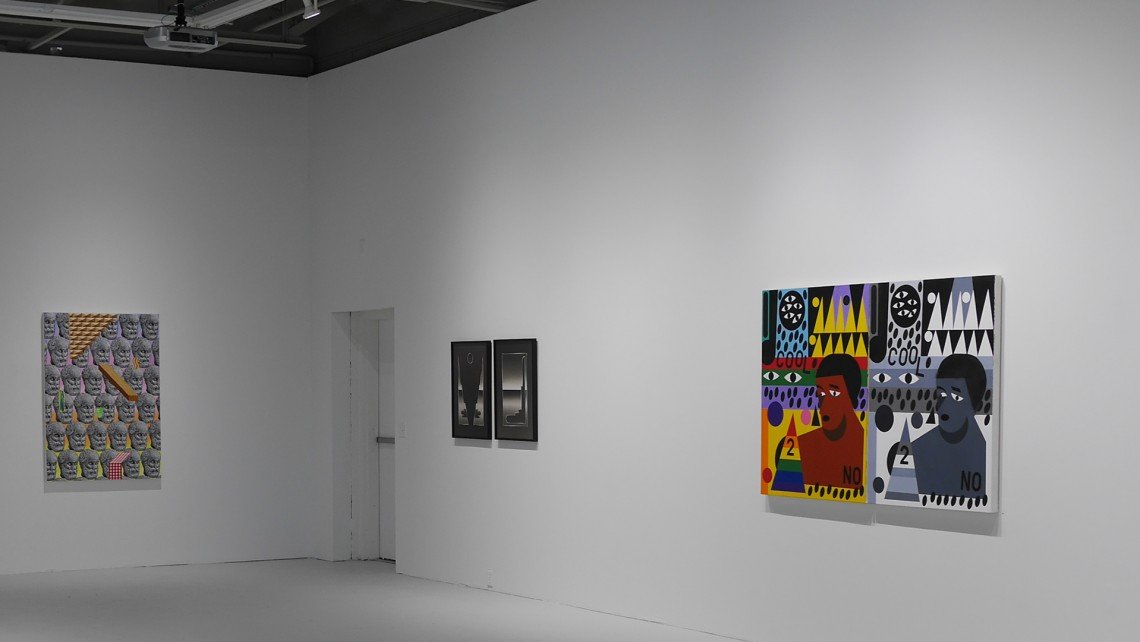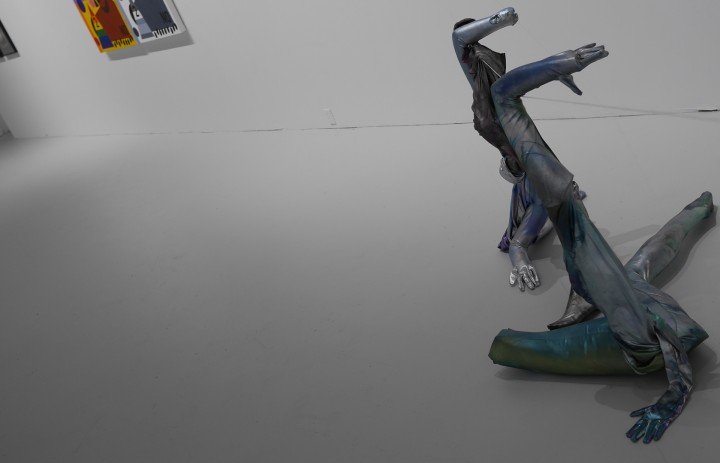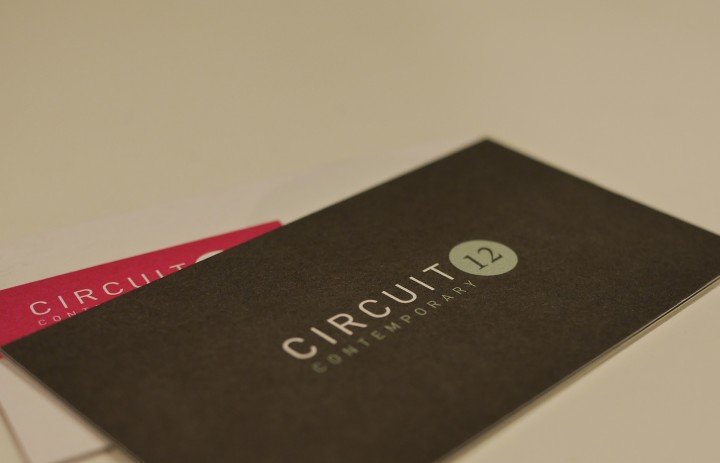- Address: 1811 E. Levee Street, Dallas, TX 75207
- Owner/Director: Dustin Orlando, Gina S. Orlando
Dustin Orlando (D): Basically, I started off as an artist; a young kid, teenage years, skateboarding and making art work. As I got older, I pursued being an artist and tried getting into galleries and had what a lot of people are faced with–the process of rejection. I was given an opportunity to have a studio space and in that space I started to do projects on my own, with my friends, diy-artist-run projects. Later that became a space, a gallery, and that shifted my interest from just making art into working with more people surrounded by ideas with different artists and regions coming together, which in turn moved my position from being just an artist into a dealer, or gallery director, and I did that for quite some time in Miami. Then, Gina and I met and we decided to move here. We decided to open a gallery. She’s also an artist. So, that’s where both of our interests lie in becoming a gallery, you know, or becoming gallery directors. We started off as artists.
Gina S. Orlando (G): I was identifying more from a conceptual point of view and Dustin was working more with abstract-based works, leaning toward a street-art component; that was what his gallery in Miami became known for in the early 2000’s. So, we saw that as a point of departure for what we envisioned our new project Circuit12 as.
D: When we moved here in 2011, we noticed a gap in the Dallas market for a lot of outside-of-the-region artists. We were already working with people nationally and internationally in Miami. So, when we opened this space we decided to bring in artists (from other regions) that we already knew we liked and had established relationships with. From that, we formed our identity and our individuality amongst all the other regionally-driven galleries here. In the four years we’ve been here, though, we’ve met a lot of new artists and dealers and managed to bring in more local and regional work into our program, but just to get started that’s how it all came about.
D: Primarily, it’s about looking at a schedule over the course of a year. When selecting what shows are going to go where, we base those on people we’re having success with, introducing new artists to our roster, continuing relationships with who we’ve been working with and then experimenting with new things. You know, let’s dabble with this idea or this concept, for this time of year, when certain factors will determine whether or not that’s a time people are buying. Then, every show needs to seamlessly transition in and out of each other with some difference between the shows. But overall, we try to stay in the same realm of a certain type of aesthetic.
G: We always like to keep things interesting for our patrons and disperse our shows in the sense of size. We don’t ever want to put solo-show after solo-show after solo-show. We like to think about what is something interesting which we could do quarterly, that people might not have seen done here before.
D: We give the artist freedom to do what they want to do and we ask them to propose something so we can know ahead of time that it’s not so far-fetched. At the end of the day, we’re a commercial gallery. We have to sell artwork to stay open. So, we can’t have someone present some grotesque, over-the-top, offensive material because although you’re making a statement as an artist, that’s not putting us in a position of either a) we necessarily want to align ourselves with that particular idea or b) we necessarily want to sell that as something representing Circuit12. But ultimately, we’re already in agreement when we have decided to work with someone. We’ve already established that we like them and their work. If they need our help with how to place or display their work, which sometimes they do, we will help; or, if they have this total mastermind, schemed-out plan of what they want to do … usually we know when to put it on and when to back off.
G: I never thought I’d be a gallerist. I always envisioned myself having a studio practice or possibly working in institutions, so I never thought I’d be identifying from that side of the fence. But, really, this has allowed me to look at art differently in the sense of not always identifying from my viewpoint but having to also think about what other people want to see in a show, not just my taste over and over again. Whenever in an exhibition format, you can’t just depend on what you think is good. You have to think about, in a commercial business, what is in demand and what viewers might find viable for their own collections. So, for me, that was what changed the most.
D: For me, starting off as an artist then moving into this position, I understand the process artists go through, which helps me speak to viewers about their work when the artists can’t be present. Most of the time I can look at work and know how it’s made, most of the time. I enjoy when I’m baffled by how something is made. But understanding that process helps me to convey that a lot easier. So, there’s that. Then, being in the position of a gallerist and an artist, I just think there isn’t enough time to give to each one, to do it right. I know there are people out there who do it successfully and I just find it’s easier, for me, to decide to do one or the other and not to do the other a disservice.
G: Oh, that is a loaded question.
D: Super loaded. Everyone has their own opinion of what’s good. For us, it’s deciding what we like, here, and putting that out there, in our space.
G: There are a lot of qualifying factors of what good is because, to me, good doesn’t necessarily mean that I like something. Good means that it’s good for what it is. So, whenever I see something that I view as good, that means that it was executed proficiently, that the person obviously has a clear command of their medium and control of their process. Whenever something transcends to being exceptional, for me, that’s something that goes without saying. It’s just something that hits me and I can’t really tell you exactly why at the moment. It is what it is because I might have said five minutes ago that I hate all paintings that color. It’s just weird. Whenever I see something that transcends the level of good to exceptional, it becomes a moment, like a god-like moment of where you’re viewing something that just touches your soul almost. I know that sounds really stereotypical and you know, whatever, lame, but really, to me that is sort of what differentiates all of those kinds of terms. It’s really hard, being more of a conceptually-driven person, for me to say what makes something good or what good even is.
D: It’s all artist-objective.
G: We’ll leave it at that.
G: Get really, really, really good at your craft. Become as technically proficient as you can and be able to back up what you do with a clear and concise vision or plan for your career because we find that the artists we choose to work with, they have the ability to plan their goals. They have a sense of discipline and that’s what I’d like to convey to artists. It’s very important–strategizing.
D: And artists need to know what’s going to be the best fit for them. It seems like a lot of artists are going to anything and everything just to find someone to say yes and in that process they’re not really doing themselves their propers. They could be going, ‘You know what, I’ve researched all the galleries and out of all the galleries, these 3-4 are the best fit for me. I’m going to go to them, submit to them, introduce myself.’ You need to be personable. You have to start a dialogue if you’re trying to get into what they are doing.
G: That should be in the artist’s plan in moving forward: finding out what niche they fit into, finding out what galleries work with artists that fit into that niche, not just flooding themselves on the market.
D: I was doing that when I started. I was going to anything and then it got to the point where I just did my own shows.
G: The thing is you’re going to get a lot of ‘no’s’ doing that and a lot of artists are going to get too discouraged to move forward. That almost happened to me. I’m sure that almost happened to Dustin. It’s really a coming-of-age thing in the art world. Everybody gets their first no’s. The people that become successful have to learn how to move past that rejection and really know that it’s totally subjective and a lot of times it has nothing to do with you.
G: And a final note to artists: it’s really, generally, not the best approach to walk into a gallery with a portfolio. It puts the director under the spotlight and makes the director say ‘yes’ or ‘no’ on the spot and because no one wants to be put on the spot like that … just don’t walk into galleries with your portfolio. Go on the website, see if they accept submissions. Even if they don’t say they do, I’m sure they do.
D: The main advice I would have liked to hear is not to give up. Basically, that’s the main thing because it takes a really long time. We’ve been doing it a long time combined. We’ve been here almost four years which isn’t a long time in the grand scheme of a gallery span. So much of what I’ve heard from people who’ve been around 15-20 years in the same location, same neighborhood who basically helped create an entire art scene in their city, they all say the same thing — ‘It took me ten years, eight years, twelve years, I’m just now getting there and that’s like fifteen years.’ So, the advice would have been like, ‘Hey, this is going to take a long time so be persistent and don’t throw all your eggs in one basket and just be ready for the ride’ type thing.
D: In the last four years that I have been here a lot has happened in the steps forward in good content, artist-run spaces coming about, institutions getting new leadership and new shows coming in. There’s a lot of venues here that basically cater to what’s going to sell and then there’s a handful of people that say it’s about a bigger discussion. There’s more of those forming. As this city grows, more culture from outside will come here and that will help push things like art and music and subcultures that exist in the city. I think as this city grows the evolution of the art scene will grow.
D: The 12 represents the year we opened — 2012, and it was the year that our son was born. Circuit is a constant flow of energy. When we first moved here we noticed there was a gap in what we wanted to do, which was bring energy into an art scene that we thought was pretty bland.
G: This is more of a funny perspective on the name but, I love vietnamese food, specifically pho. There’s a lot of pho restaurants that are “Pho” then the number of the year they started. So, I was thinking about my business. ‘Circuit? Hey! The year we started!’ That was how the number came into play. It just felt right.






